
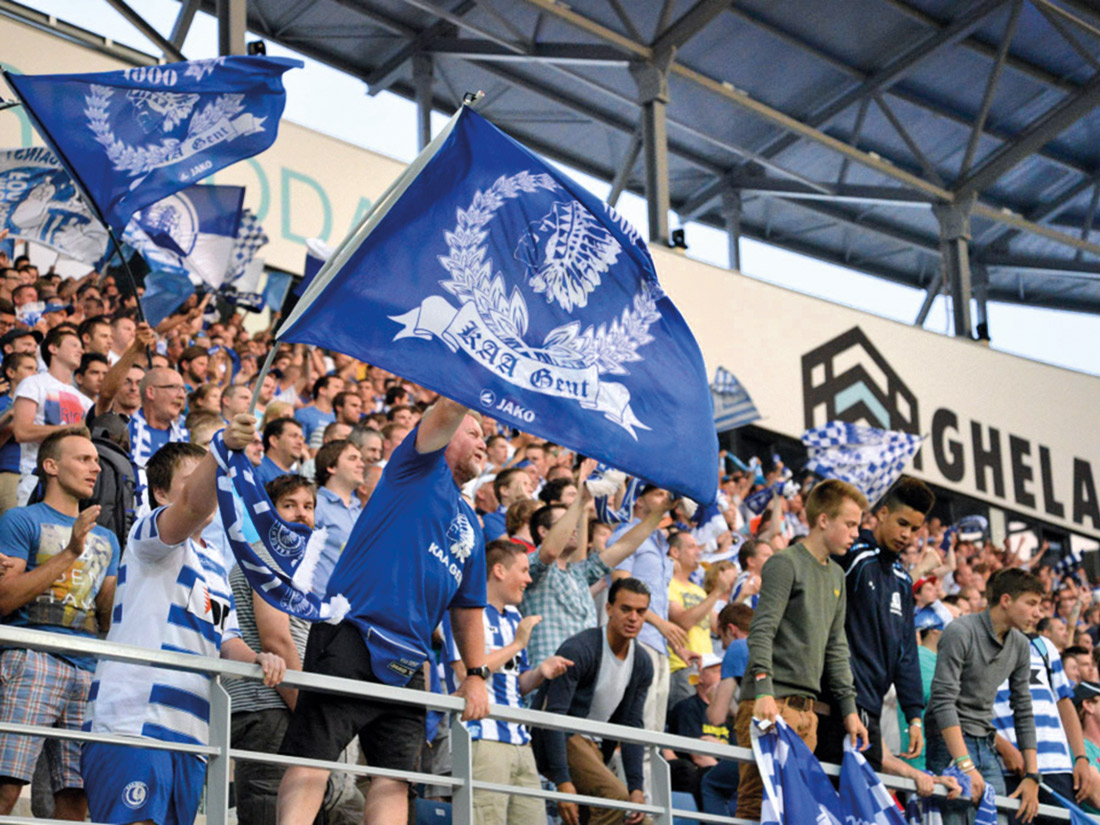
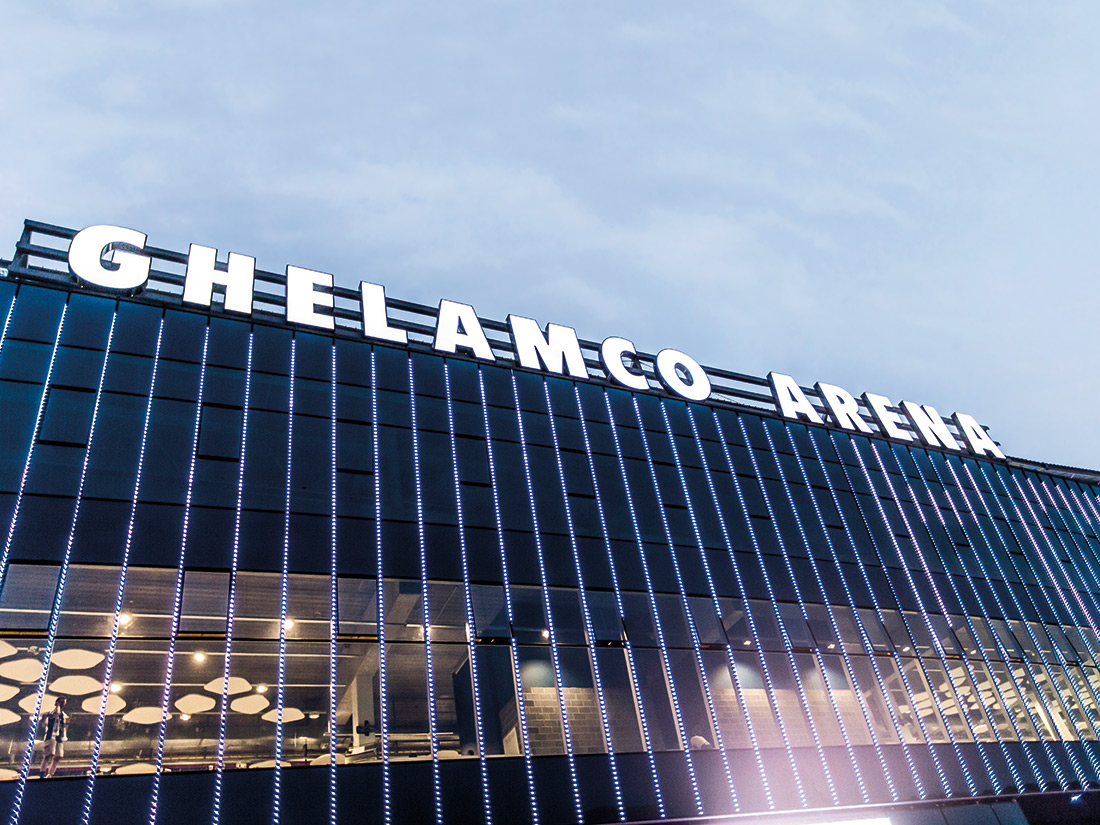
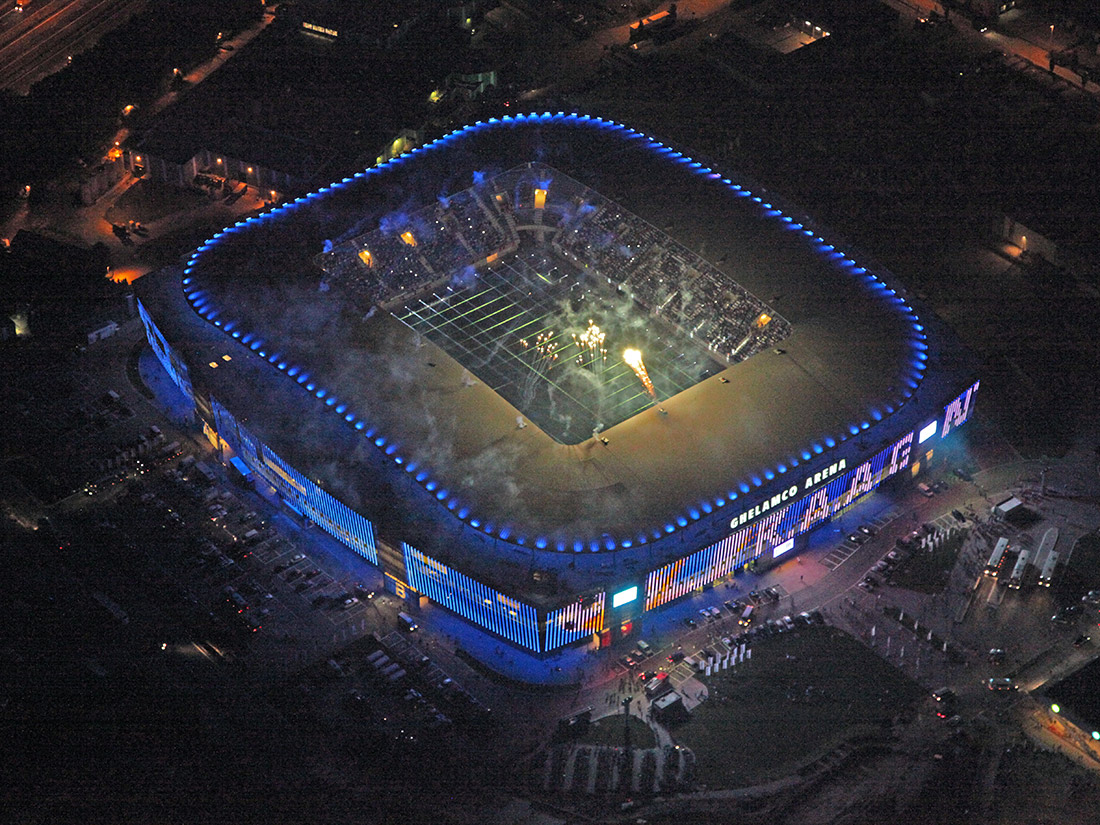
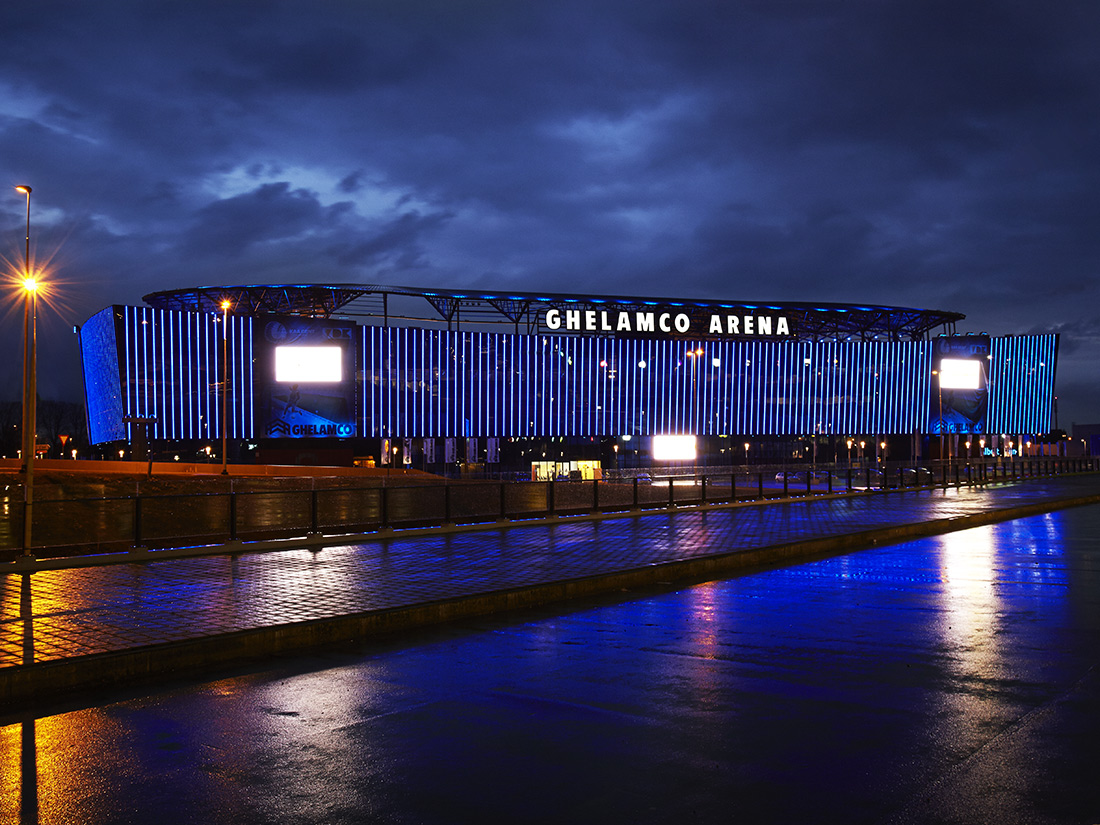

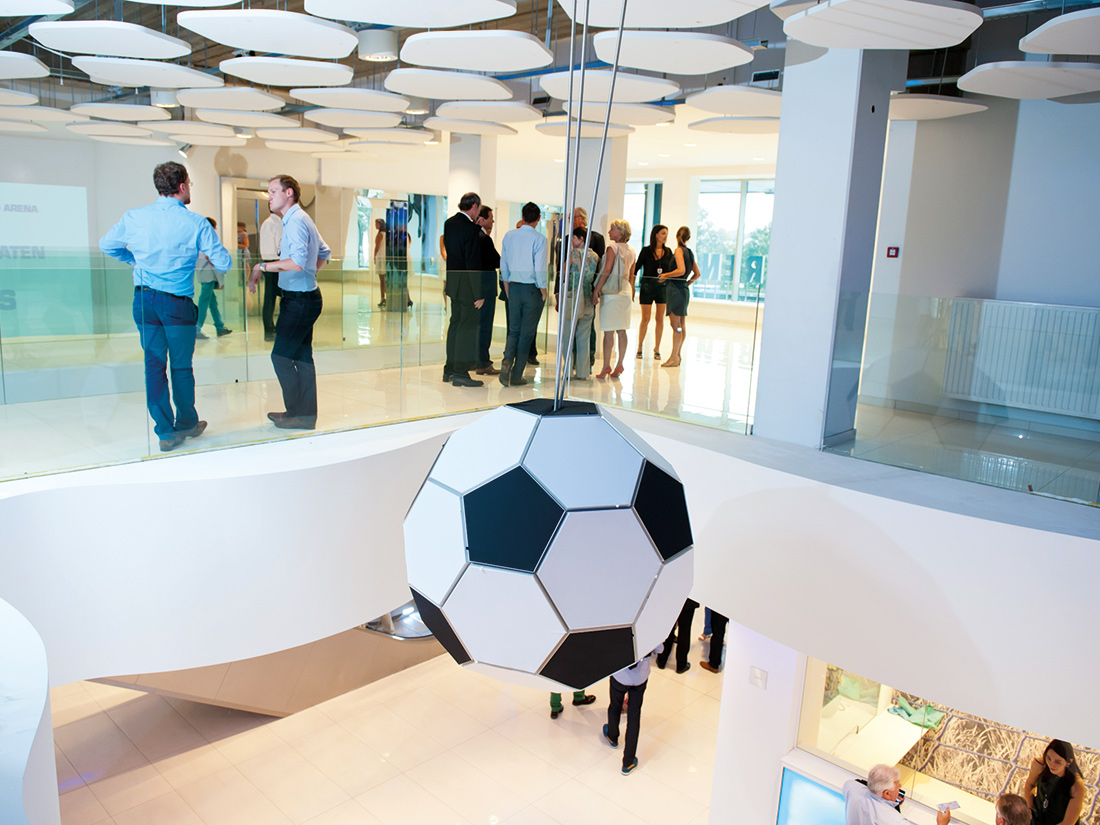
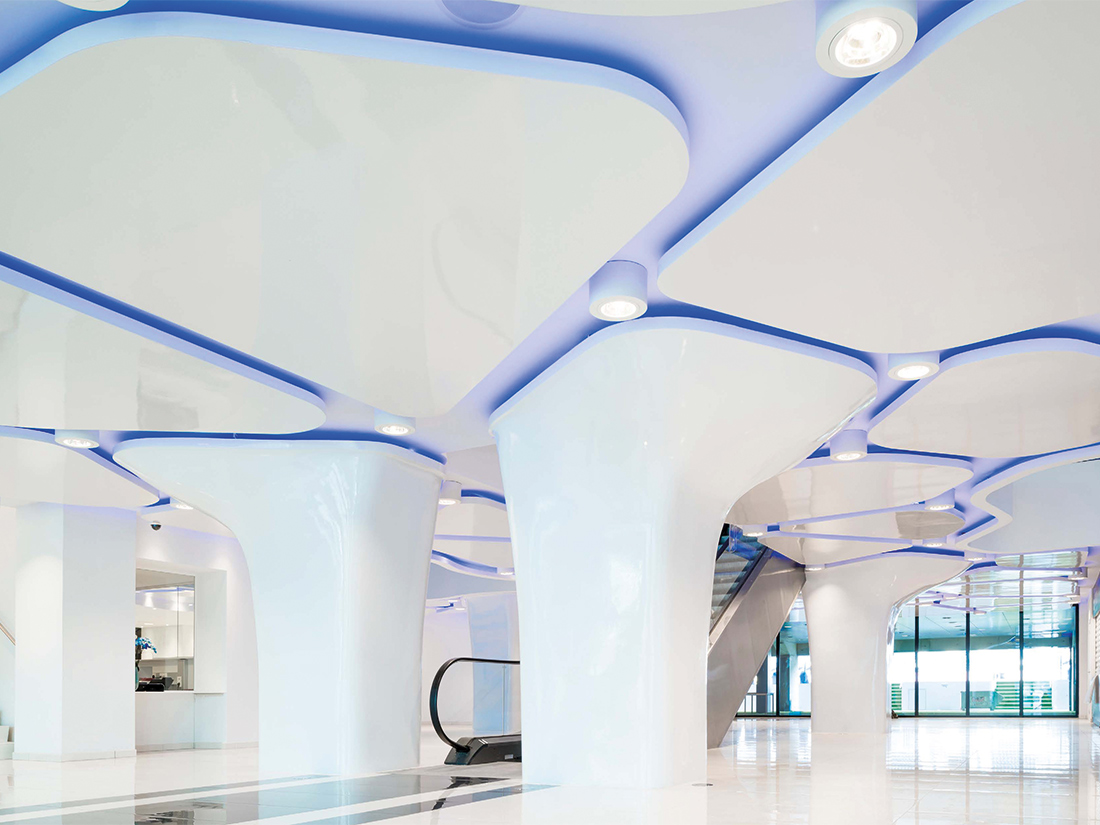


Ghent Football team: Championship title leveraged by new stadium
De Tijd – 22nd May 2015, page 4
KAA Gent had to wait 115 years, but yesterday, the Buffalos final won their first long-awaited title. As the result of building a new stadium, the club went through difficult times. But, today, the very same Ghelamco Arena has become the financial and sporting powerhouse behind the club.
KAA Gent had to wait 115 years, but yesterday, the Buffalos final won their first long-awaited title. As the result of building a new stadium, the club went through difficult times. But, today, the very same Ghelamco Arena has become the financial and sporting powerhouse behind the club.
When club chairman Ivan De Witte said at the opening of the brand-new Ghelamco stadium in July 2013 that the club would be champions within five years, everyone thought it was just promotional talk designed to shine the spotlight on his ambitious 80 million euro property project. Two years later, De Witte got his own back on his critics by leaving leading teams such as Anderlecht and Club Brugge trailing in his wake, with KAA Gent ending the Belgian football league season as champions for the first time in the club’s history.
The club can thank the twosome of Ivan De Witte and manager Michel Louwagie, who have the reins of the club firmly in hand, for the fact that the blue-and-whites have come so far. When the two took over the club in 1999, the team was in dire need of a breath of fresh financial air, struggling with a mountainous debt of 23 million euro. But De Witte and Louwagie brought in investors and rescued the club from its budgetary morass.
Ghelamco
Their financial cleansing programme was crowned by the construction of a new stadium, the Ghelamco Arena. Everyone saw the new ground as a crucial step in the club’s development. But it is easy to talk like that with the benefit of hindsight. As a result of the huge investment in the stadium, in the summer of 2013, KAA Gent closed the door on its old Ottenstadion with a net loss of 2.4 million euro. The building costs also meant that the club’s available assets had fallen below zero. Worse than that, the team’s sporting performances in Ghelamco Arena’s debut season in 2013-2014 was filled with setbacks, including disappointing transfers, changes of manager/coach and a less-than-glorious seventh place in the league.
The club was simply unable to restore its bank balance under its own steam. It was mainly a grant of 2.5 million euro for the Ghelamco Arena from the Flemish government that took the club’s assets back into the black. Things went better on the operations side, too, and last season KAA Gent recorded a modest operating profit of 700,000 euro.
De Witte denied that his club had over-extended itself for the prestigious new stadium and that as a result KAA Gent was lumbered with a major financial risk. “There was nothing fundamentally wrong,” says the chairman. “Our negative assets had everything to do with the date on which we were to add the revenue from a few transfers to the books. Had we completed those transfers a few days earlier, our assets would not have gone into the red during our final season at the Ottenstadion. It was pure accountancy. The company was not in any danger.”
Generous benefactor
The Flemish government wasn’t the only party to come to the club’s aid financially. In 2013, the city of Ghent also made a major financial contribution via the intermunicipal water utility TMVW (now Farys) to complete the Ghelamco project. TMVW, a ‘high-ranking body’ of the city of Ghent, came through with 18.5 million euro, enough to fund a quarter of the total cost: 1 million euro for a package of shares, 5.5 million euro by way of a loan to the club and 12 million euro for 7,500 square metres of office and storage space in the stadium.
Now that under trainer Hein Vanhaezebrouck KAA Gent has put in a top playing season, it seems that in addition to its sporting performance, the club’s financial situation can look to the future with confidence over the coming years. And as a result of the increasing hordes of supporters and the club’s additional visibility, the stadium has gone from white elephant to a cash cow. The operating budget of 16.5 million euro at the Ottenstadion rose to 24.5 million euro this season (32 million including all catering). Turnover was also given a firm boost and rose from 20.4 million euro when the Buffalos were still playing at the Ottenstadion to 28.2 million in their first season at the Ghelamco Arena. This year, De Witte expects to see turnover rise further to 32 million euro, with a profit of 1.5 million. With more seats in the new stadium (20,000 compared with 13,000 previously) the average number of spectators attending matches has risen spectacularly from 10,500 to 18,500, while season ticketholder have risen from 8,600 to 14,000.
KAA Gent is able to make good use of the structural rise in revenue, because last season, the club took an additional 30 million euro of debt on to its books for the new stadium. This quadrupled the balance sheet total to 43 million euro. “This investment is fully factored in and is part of our business strategy,” says commercial director Patrick Lips. “Our borrowings are in proportion and our investment is spread in time.” KAA Gent’s right to use the stadium is set for a period of 50 years.
The new football temple has meant that La Gantoise has also been able to balance the various income streams better.
In contrast with some other first division teams, KAA Gent is not disproportionately dependent on a single revenue stream. Only the income from catering is something on the slim side, but this is due totally to the fact that the majority of the catering is subcontracted to a separate subsidiary, Horeca Foot, which operates the award-winning restaurant Horseele, as well as the bistro and sandwich bars in the stadium. “There’s still an operating budget of around 8 million euro there,” says Lips. “So when you add it to the budget of the KAA Gent non-profit association, we have an operating budget in excess of 32 million euro.”
As a result of the past successful season, revenue from transfers, which is recorded as a one-off item and hence is not part of the structural income for annual operations, should provide a useful extra. According to Michel Louwagie, golden goose Moses Simon, who was recruited during the winter break for 4 million euro could generate 20 million euro if he were to be sold on.
In particular, the additional income generated by taking part in the Champions League will provide a significant boost of 15 to 18 million euro. “Thanks to that financial injection, we should find ourselves on the same level as Club Brugge and Anderlecht within two to three years,” says De Witte proudly.
TOBE STEEL